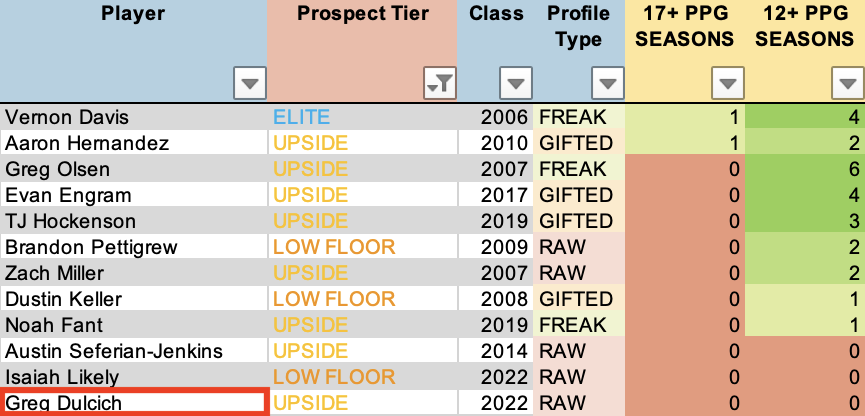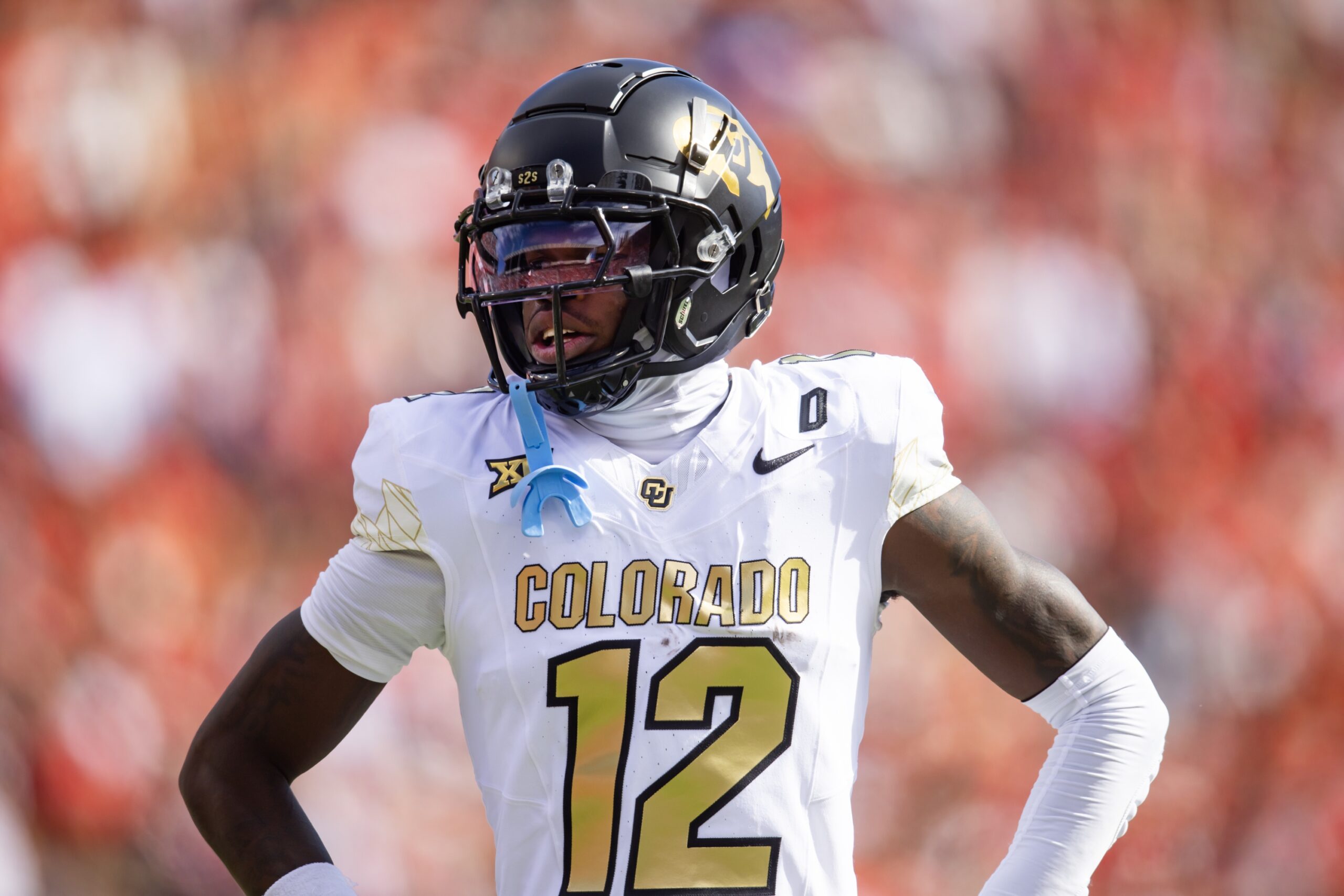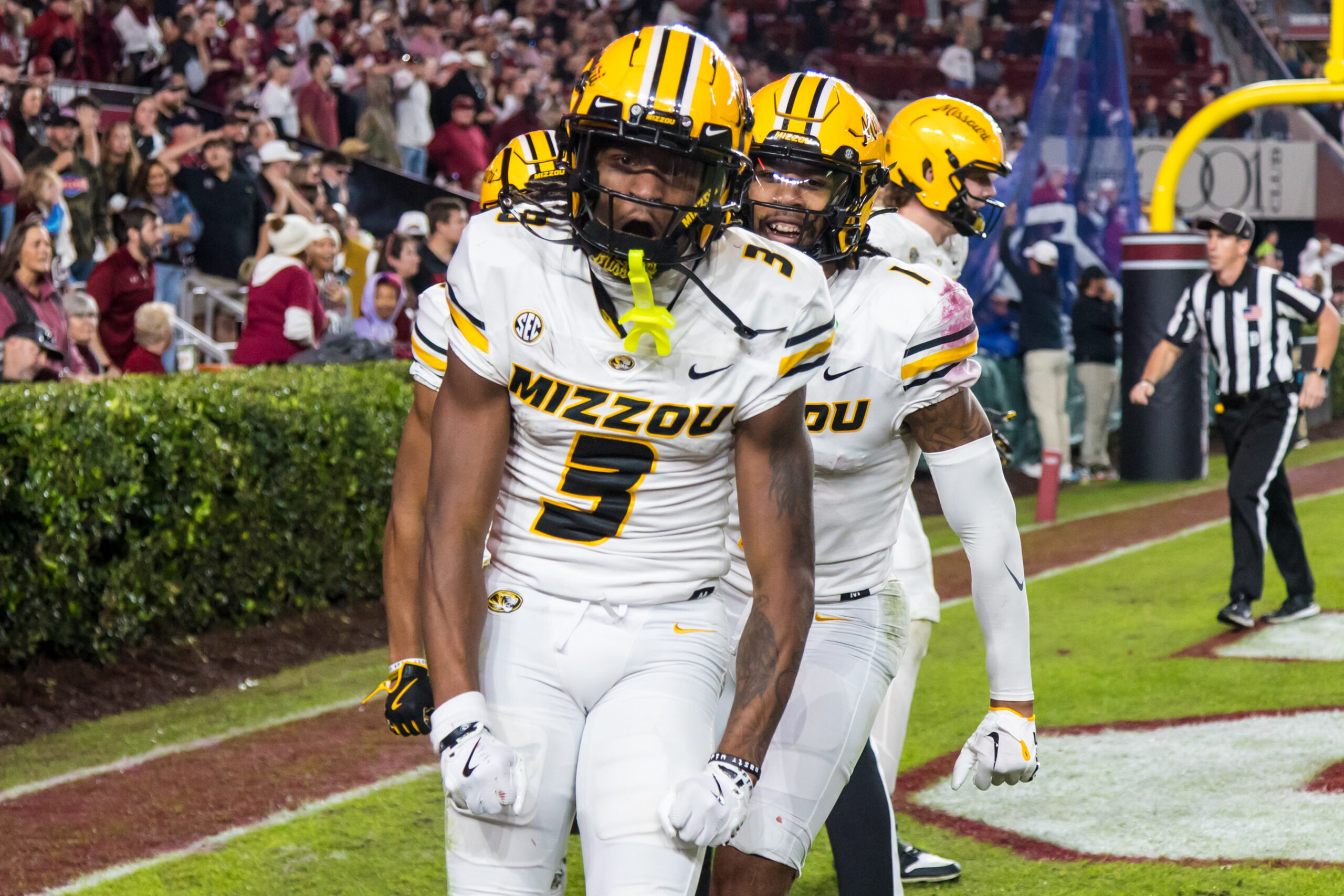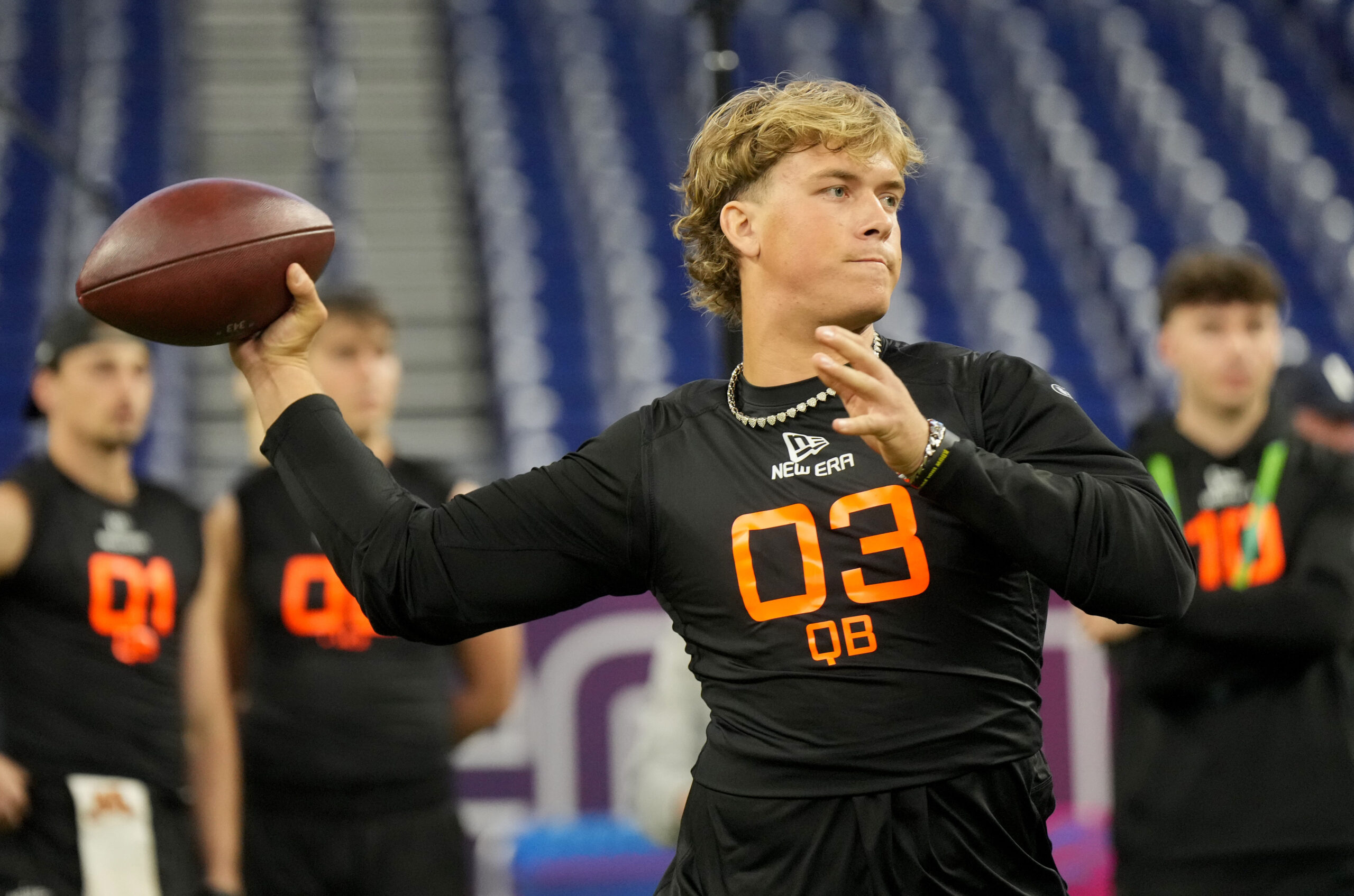Analysis
6/30/23
6 min read
Target Broncos TE Greg Dulcich Late in Dynasty Drafts
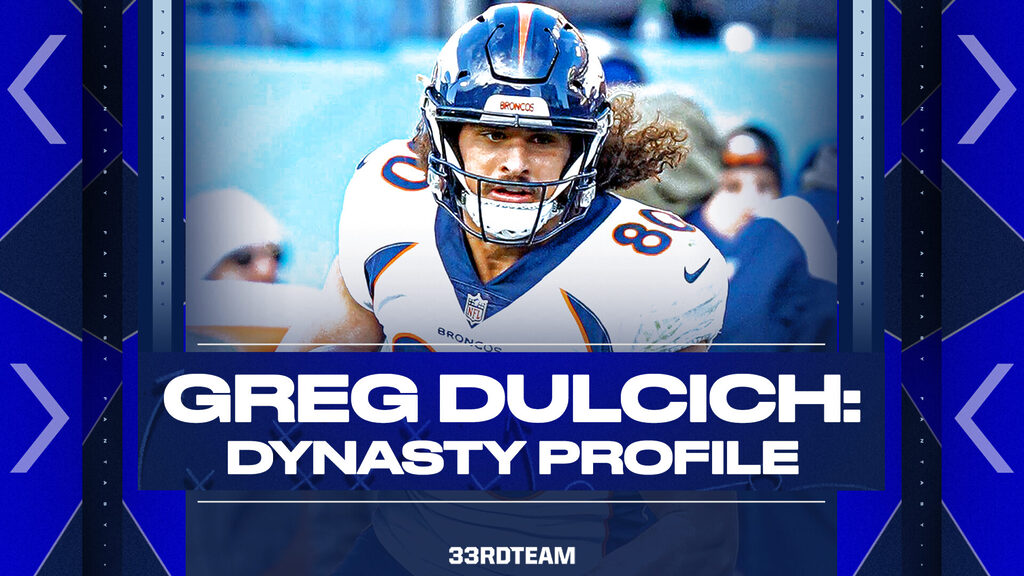
High-end or substantial production in fantasy football is nearly impossible to find when it comes to tight ends. Since 2006, only 15 tight ends have posted 17+ points per game (PPG), with only five of them posting multiple seasons of 17+ PPG.
The number of high-producing tight ends seems especially low when compared with other positions.
During that same period, there have been 33 running backs who posted an 18+ PPG season, with 19 doing so multiple times. When it comes to wide receivers, there have been 31 to post an 18+ PPG season, and 16 of them were able to do so in multiple seasons. Finally, looking at quarterback, where even fewer players have been drafted since 2006 compared with tight ends, 16 have been able to post a 24+ PPG season, with 10 quarterbacks doing so in multiple seasons.
It is hard to find high-end, meaningful production at tight end with only a select few, such as Travis Kelce, able to replicate their impressive production consistently.
This tells us one thing: We should absolutely be shooting for upside. That’s why Denver Broncos tight end Greg Dulcich is worth targeting this year.
Why Dulcich Could Have a Big 2023
Strong Collegiate Career
To truly comprehend Dulcich’s potential, we need to look back at his collegiate profile. Given he is only one season into his NFL career, his college play is important when creating an outlook for him.
Dulcich had a late start to his college career. It wasn’t until his junior year that he saw meaningful playing time, but that didn’t stop him from being dominant for UCLA. That season, he posted 15.4 PPG on a 20.5 percent target share and 2.58 yards per team pass attempt. All that on an average depth of target (aDOT) of more than 15 yards downfield.
For reference, he’s the only 20-year-old collegiate tight end to post a 20 percent-plus target share on a 15-plus aDOT, which suggests Dulcich could be a premier receiving weapon out of the position.
Those numbers weren’t a fluke, either. The following season, he posted a 21.3 percent target share — good for a 29.1 percent receiving yard market share — on another 12-plus average depth of target. While his fantasy output from the previous season (15.4) fell to 13.1, he was still just the fourth collegiate tight end to ever post just 12.0-plus PPG at both 20 and 21 years old.
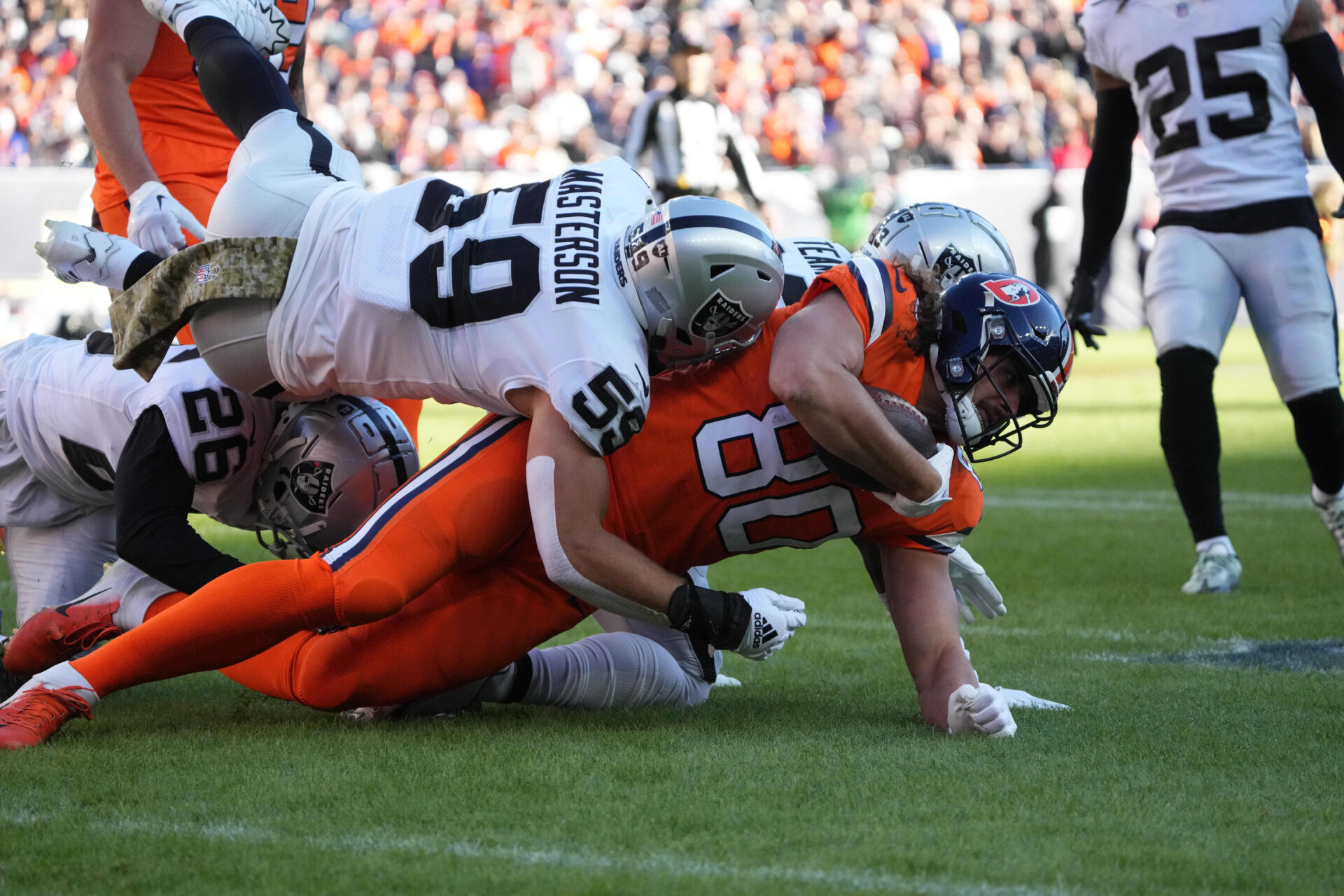
Pre-Draft Riser
When Dulcich declared for the NFL Draft after his senior season, he was not considered a slam-dunk prospect. Our projected draft capital model had him as a third-round pick. The only other tight end prospects projected for third-round draft capital to post multiple 25 percent-plus receiving yard shares before turning 21 were Evan Engram and Darren Waller.
In the pre-draft process, Dulcich was considered a riser by our analysts at The 33rd team.
However, his 40-yard dash time was disappointing. At 6-foot-4, he ran just a 4.69, giving him a 99.7 height-adjusted speed score and an 8.25 relative athletic score (via @MathBomb on Twitter). Those numbers may not mean a whole lot to you, but in a world where we’re looking for elite athleticism at the tight end position, it fell just short of the mark.
Regardless, Dulcich still had a strong prospect profile, and the Broncos drafted him 80th overall in the third round. Based on his collegiate production, athleticism, draft capital and a couple of other minor factors, Dulcich was considered an Upside Raw prospect.
All third-round upside tight end prospects are featured below, and for someone who had a fourth-round rookie ADP last year, he was beyond undervalued at the time.
Productive Rookie Season
Dulcich was one of the few bright spots on a Broncos team that severely underachieved, scoring 10.3 PPG in his rookie campaign. While that doesn’t sound like a whole lot, context is crucial.
When considering the scarcity of production, especially early career production, that number ranked eighth highest all-time among rookie tight ends. Notably, it places Dulcich in the esteemed company of Rob Gronkowski, Kyle Pitts, Engram, Pat Freiermuth, Jordan Reed and John Carlson.
But the peripherals that led Dulcich to that 10.3 rookie PPG is where we start to get excited. His 16.4 percent target share may have been third-best on his team, but it was fifth highest among all rookie tight ends since 2006. That mark has only been topped by Pitts, Engram, Reed and Carlson.
Not only that, Dulcich put up those numbers on the highest aDOT for any rookie tight end with at least a 15 percent target share. In fact, he joins Vernon Davis, Pitts and Engram as the only rookie tight ends to post a 15 percent-plus target share on at least an aDOT of nine.
In Denver, like in his time at UCLA, Dulcich was proving himself as a capable receiver down the field. Exactly what you look for in a fantasy tight end.
In 2022, there were only two other tight ends to post a 15 percent-plus target share with a nine-plus average depth of target: Mark Andrews and Pitts, two of the few elite tight ends on the dynasty market who we view with ultra-high upside.
Range of Outcomes for 2023
The two most important aspects to look at when considering the range of outcomes for a player heading into his second season in the NFL are his prospect profile and rookie season.
By identifying players with similar career arcs and production, we can determine how Dulcich might produce moving forward.
While there is still a downside in Dulcich’s profile, it’s clear with players such as Davis, Greg Olsen, Engram and T.J. Hockenson included in Dulcich’s range of outcomes, there is a high upside.
When assessing a wider range of outcomes, it’s just as imperative to gauge the price of acquiring the player. In other words, am I paying as if the upside is guaranteed? Is the downside risk accounted for in the price tag?
For Dulcich, not enough upside is factored into his cost in dynasty leagues. That’s a great thing for us.
He is being drafted after the 10th round and later than fellow tight end Dalton Schultz, someone who does not have nearly Dulcich’s level of upside. Later in drafts, when assets are cheap to acquire, upside matters a lot more because the floor is accounted for through market value.
What we’re doing with Dulcich in dynasty is simple: We’re chasing upside at a position where high-end production is a rarity.
Follow The 33rd Team Podcast Network on Spotify and Apple Podcasts.


